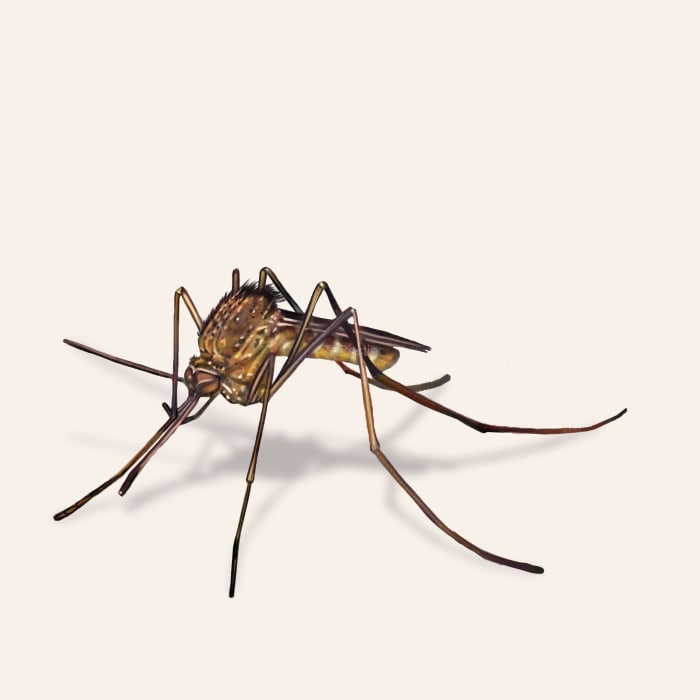How to identify and get rid of common house mosquitoes

Avoid the itch: smart ways to keep mosquitoes away
Your home is supposed to be a haven where you can relax and not worry about anything. But, when the constant buzzing of mosquitoes keeps ringing in your ears, you know you have a problem on your hands.
Common house mosquitoes can turn any outdoor activity into a game of swat and scratch. For homeowners, these pests are a nuisance and a genuine concern for comfort and health.
These mosquitoes can breed in even the smallest amount of standing water. From a neglected birdbath or a clogged gutter to the saucer under a houseplant, you could have a whole swarm of mosquitoes growing in your backyard, and you wouldn't even know it. This eventually makes evenings on the patio a challenge and leaves itchy bites that can potentially transmit diseases. Males only drink nectar and don't feed on blood, but females require blood meals to develop their eggs.
They then lay their eggs in stagnant water, where they hatch into larvae that feed on organic matter in the water. Within a week, these larvae develop into pupae, and shortly after that, adult mosquitoes emerge, ready to feed and mate.
This cycle can repeat several times throughout the warmer months, with each female capable of laying hundreds of eggs.
How to identify common house mosquitoes
Common house mosquitoes can be identified by their slender pale brown bodies marked with light stripes across their abdomen. Their wings, which are longer than their bodies, have tiny scales that can give them a slightly fuzzy appearance.
When resting, these mosquitoes have a unique posture where their body is parallel to the surface with their head pointing downward, unlike other species that may rest at an angle.
Like all mosquitoes, they will have a long proboscis that they use to bite and suck blood, but their long legs will be void of any dark bands or stripes.
If you notice an increase in mosquitoes buzzing around damp areas of your yard or home, especially during dusk or dawn, it could indicate an infestation. Additional signs include frequent mosquito bites and the presence of larvae in standing water, which look like tiny wriggling creatures.
How big are common house mosquitoes?
Adults range from 1/4 to 3/8 inches long.
What other pest looks like a common house mosquito?
Mosquitoes are agile and small, so getting a good look at them may be hard before they fly off. Common house mosquitoes can be confused with other mosquito species, especially Asian tiger mosquitoes or even midges. However, common house mosquitoes lack the distinct black and white striping on the body and legs.
Where do common house mosquitoes live?
Common house mosquitoes are found throughout the United States, thriving in warm, humid environments. They prefer to hand around areas with stagnant water, like ponds, bird baths, or clogged gutters.
How to get rid of common house mosquitoes
It can be challenging to eliminate mosquitoes entirely from your property, as these bloodsuckers can travel quite a distance to get to a blood meal.
If you want to reduce the number of mosquitoes in your home, then reduce any standing water. This can include:
- Ponds
- Bird baths
- Clogged gutters
- Flower pots
- Old tires
- Rain barrels
- Containers that hold water
- Try Pestie!
If you want to enjoy the outdoors again, follow these tips:
- Install fans in outdoor areas to disrupt their flying.
- Encourage natural predators like bats or dragonflies, which feed on mosquitoes.
- Use mosquito repellants like DEET or picaridin when outside
- Wear long sleeves and pants to cover exposed skin
- Cut your lawn regularly and keep weeds away
Treat common house mosquitoes with Pestie
If you're still having trouble keeping common house mosquitoes away, the best option is to use a pro-grade, effective pest control solution like Pestie.
Pestie is a do-it-yourself pest control solution that's specially designed to keep common house mosquitoes and other pests away from your home.
With Pestie, you can rest easy knowing that your living space is protected and free of creepy crawlies. And the best part? It's designed for people, pets, and the planet, so you can say goodbye to harsh chemicals and hello to peace of mind!
- Save hundreds compared to traditional annual pest plans
- People, pet, and planet-friendly
- Pro-grade customized formulas
Quick facts
How dangerous are Common House Mosquitoes?
High danger risk
Not all mosquitoes carry diseases, but there are several that commonly do. Some diseases in the US include malaria, dengue, chikungunya, Zika virus, West Nile virus, and encephalitis. Mosquitoes can also transmit heartworm to dogs, which can be fatal if left untreated.
Mosquitoes leave an itchy red welt where they feed on you and that itch can become infected if opened up by scratching. Use an antihistamine for local relief or use a combination of baking soda and water to make a paste to reduce itching.
- Scientific name
Culex Pipiens
- Other common names
Northern House Mosquitos
- Colors
Gray or black with white markings, or iridescent scales
- Life span
10 days to 2 months
- Diet
Males feed on nectar and plant juices, and females feed on blood
Mosquitoes are one of the most dangerous animals in the world, killing ¾ million people worldwide every year from transmitted diseases.








